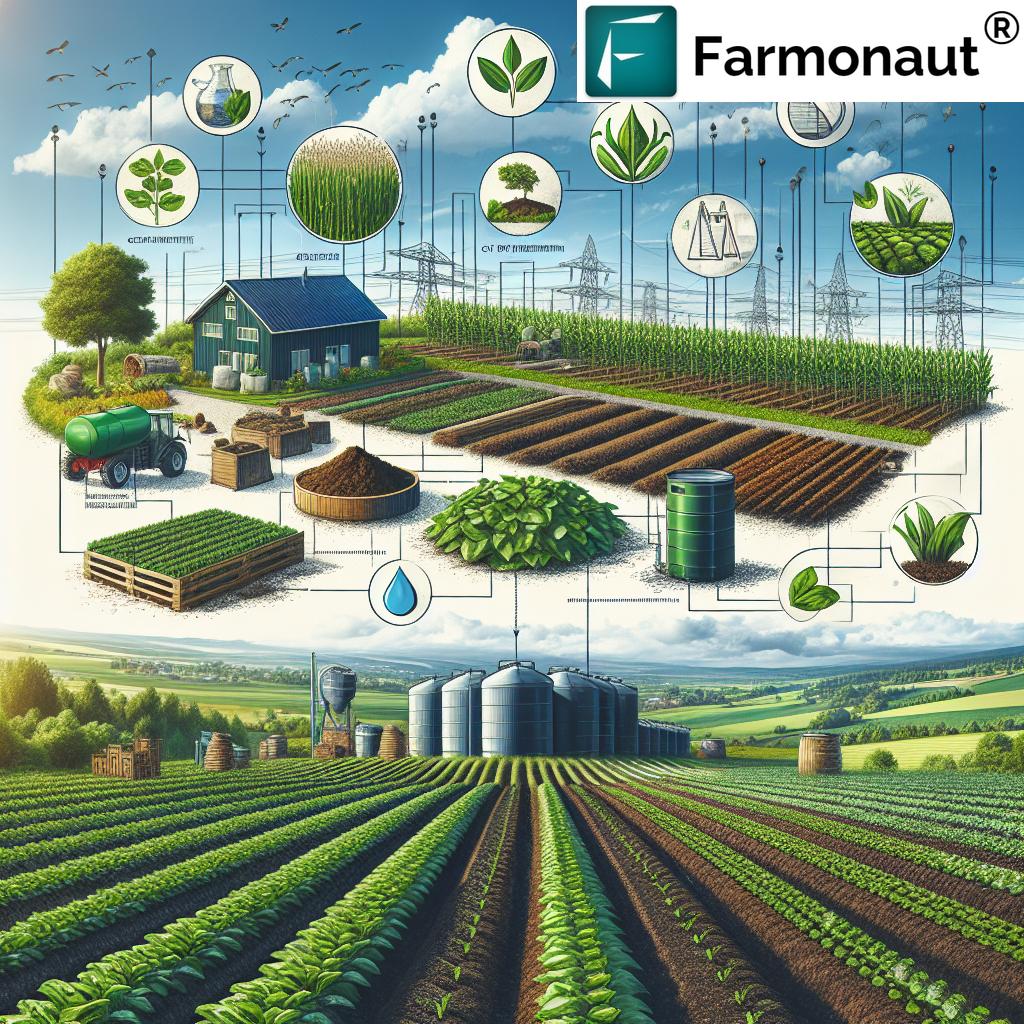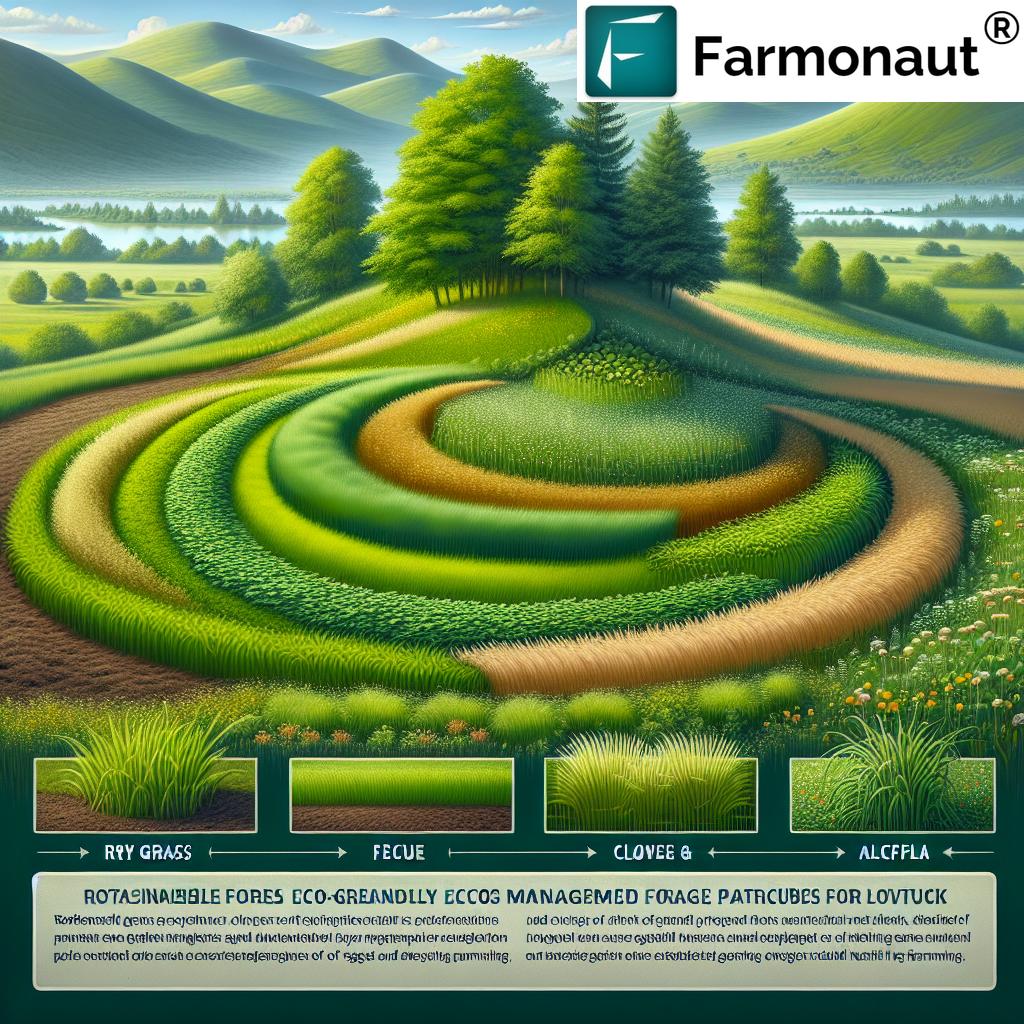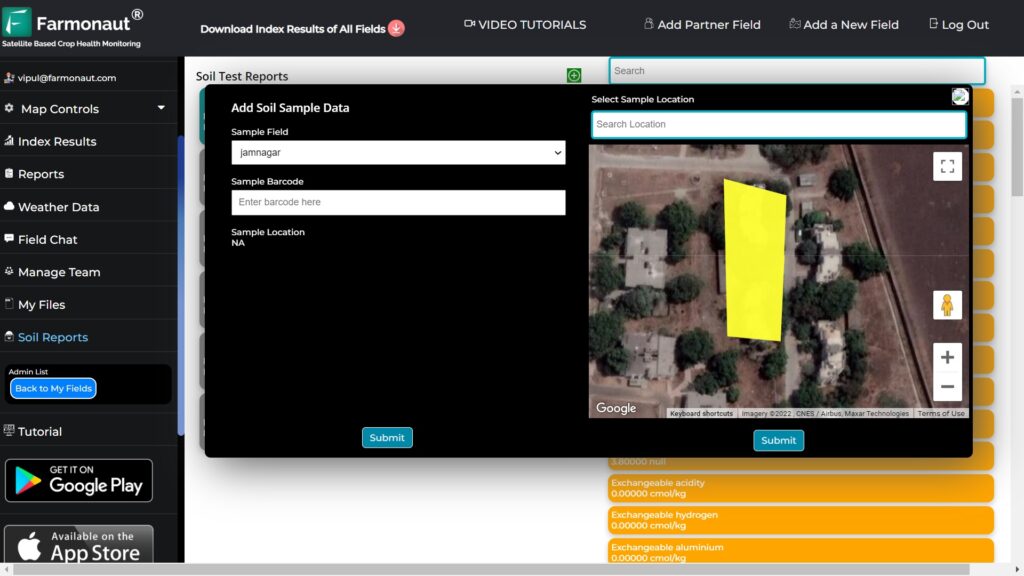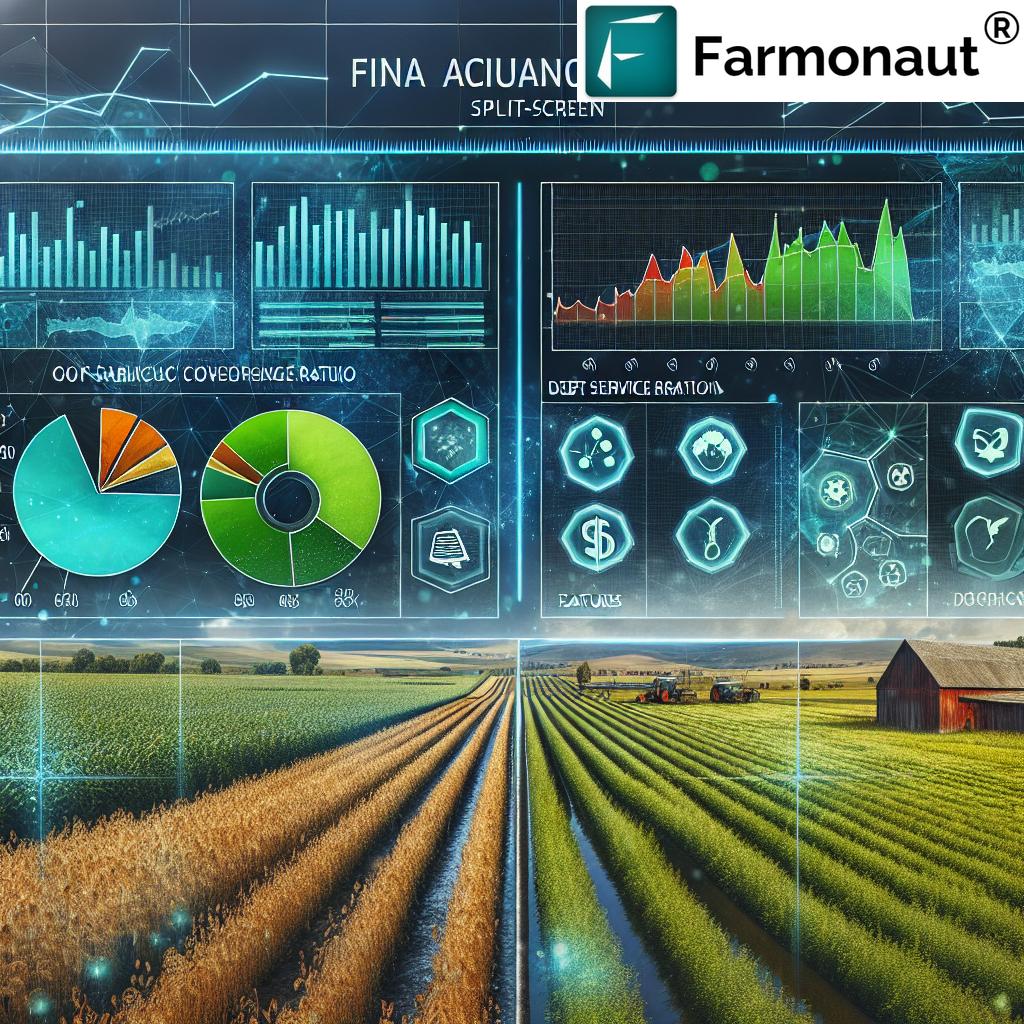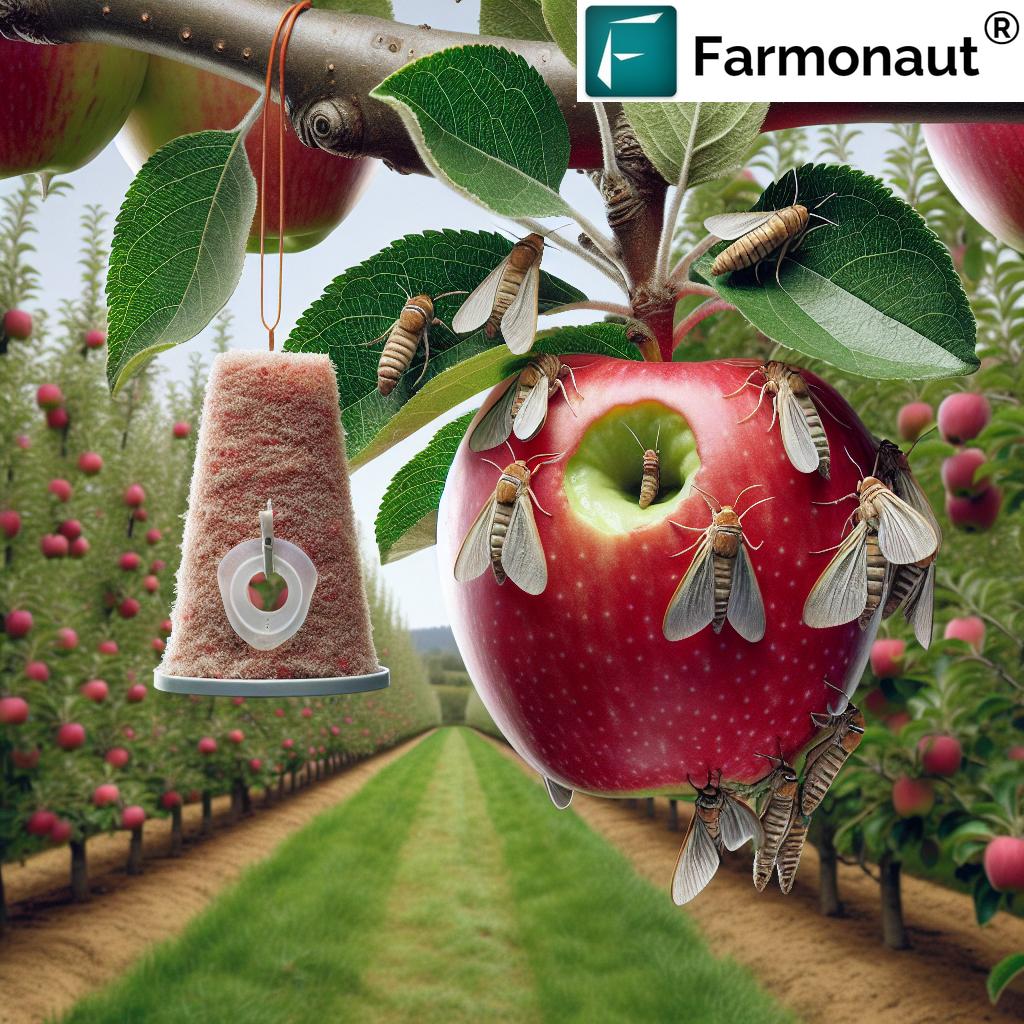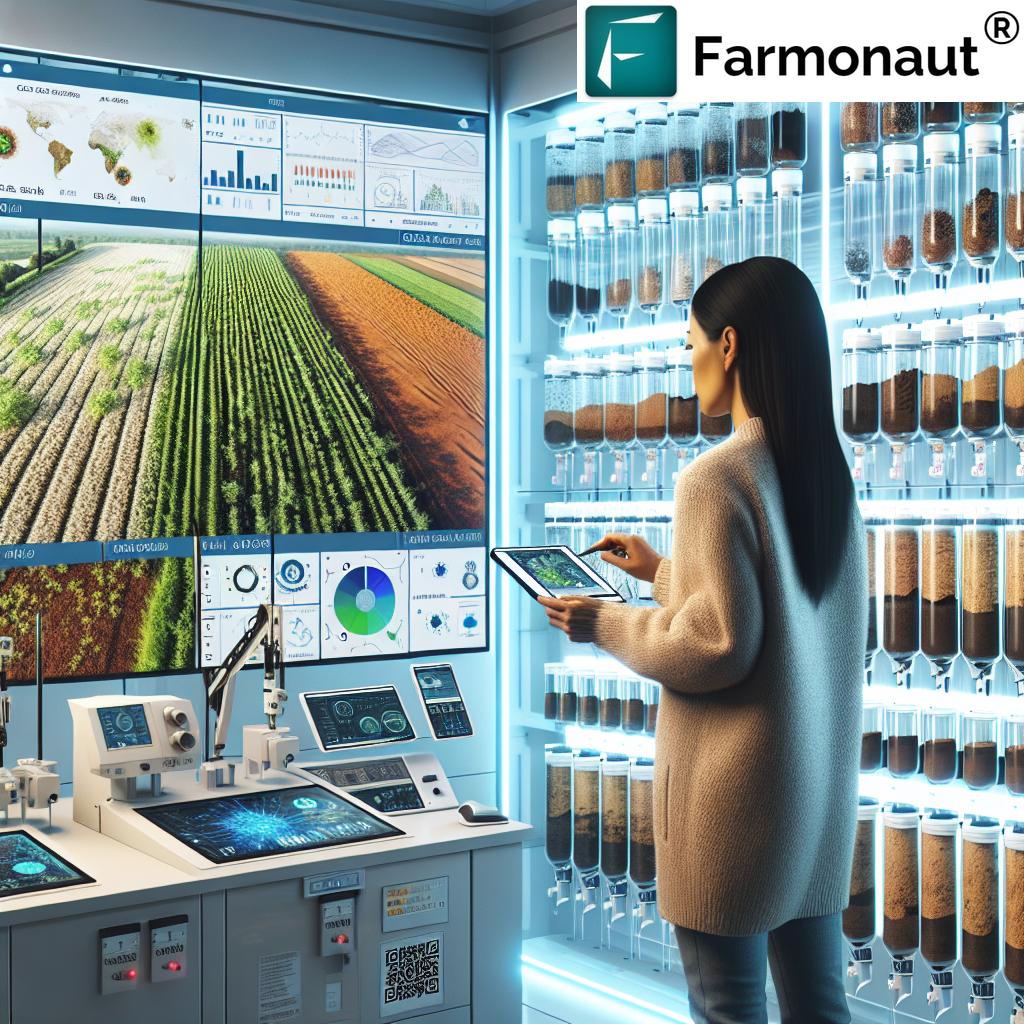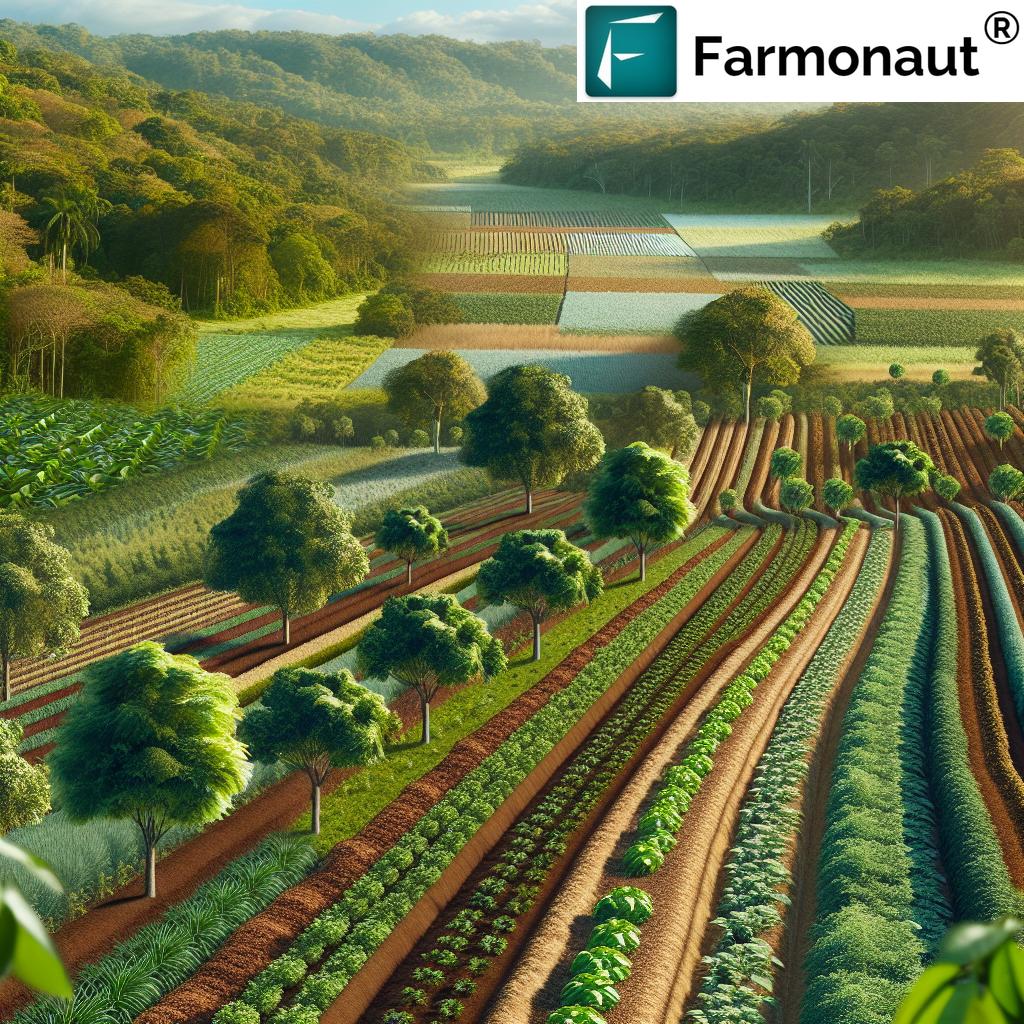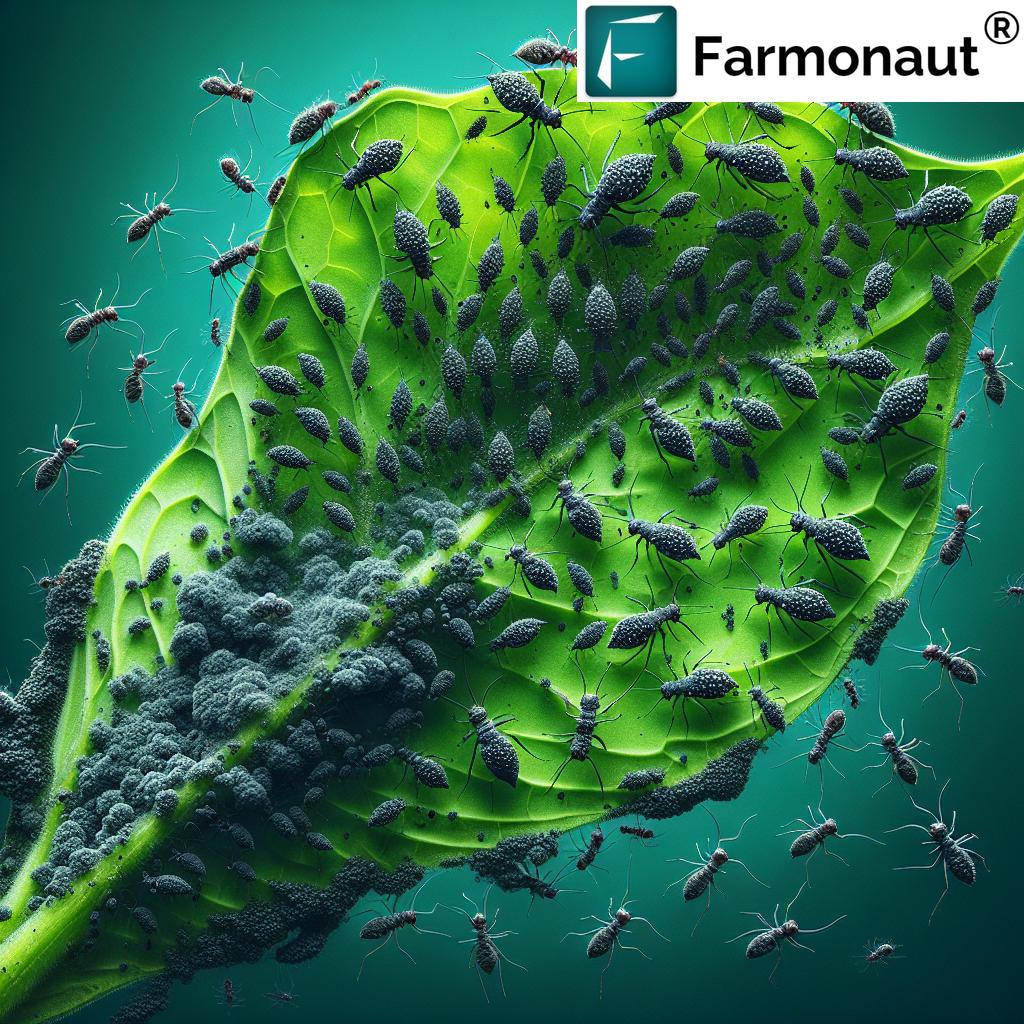Farmers Are Struggling: 10 Sustainable Solutions
Introduction
Farming lies at the heart of our planet’s food security, rural livelihoods, and the global economy. Yet, farmers are struggling worldwide—facing unprecedented challenges that threaten the sustainability, profitability, and resilience of agriculture and forestry. From intensifying economic pressures and unpredictable weather events to mounting input costs, labor shortages, and climate change impacts, the complex landscape of challenges faced by farmers today demands deeper understanding and practical, sustainable agriculture solutions.
In this comprehensive guide, we will explore the top challenges in modern agriculture and highlight actionable, environmentally responsible strategies proven to boost crop yields, improve farm profitability, and support long-term sustainability. We will also discuss the pivotal role of technology—especially precision and data-driven farming—using Farmonaut’s satellite and AI-powered tools as examples of how modern farming technologies are revolutionizing the sector.
“Over 70% of farmers worldwide face financial stress due to rising input costs and unpredictable weather patterns.”
Top Challenges Faced by Farmers in Modern Agriculture
Today’s agricultural landscape is fraught with issues—ranging from unpredictable climate patterns to the relentless rise of input costs and financial strain. Farmers financial struggles are compounded by labor shortages, volatile markets, declining soil fertility, and a rapidly changing policy environment. Below, we discuss these critical challenges in detail and set the foundation for our exploration of sustainable agriculture solutions.
1. Economic Pressures on Farmers
Economic pressures remain a pervasive concern for the global farming community. Inflation has driven up the prices of essential inputs such as seeds, fertilizers, and equipment, directly squeezing farmers‘ profit margins. Moreover, global supply chain disruptions and shifting commodity prices further erode the financial foundation of farming.
Limited access to affordable credit means many cannot invest in modern technologies or sustainable practices that could increase their productivity. For many, the cycle of farmers financial struggles is hard to break without systematic intervention.
2. Labor Shortages in Agriculture
The issue of agricultural labor shortages has become critical, particularly during vital planting seasons and harvesting windows. Migration of younger workers to urban centers has left farms with an aging workforce, while recruitment and retention of skilled labor becomes increasingly challenging.
- Essential processes such as planting, processing, and harvesting are often delayed or inadequately managed.
- Productivity suffers, threatening profitability and crop yields.
- Investing in agro management apps can enhance monitoring and planning, helping to mitigate these shortages with better resource allocation.
3. Market Volatility and Pricing Pressures
Market volatility—driven by unpredictable supply, international trade tensions, and local disruptions—hits profit margins and leads to dangerous price fluctuations. Farmers depending on a few crops are especially vulnerable, as sudden price drops can wipe out an entire season’s income.
- Forecasting income becomes a risky task, complicating borrowing and investment decisions.
- Inadequate market infrastructure further exposes farmers to unfair market practices and high post-harvest losses.
4. Growing Debt Burden
With mounting operational costs and price unpredictability, many farmers are forced into borrowing. However,
- High interest rates and unpredictable revenue make debt repayment difficult.
- The resulting debt trap hinders investment in new technologies or expansion—threatening long-term farm viability.
- Loss of land or assets becomes a real risk for families unable to catch up.
5. Environmental Challenges & Soil Fertility Management
Our environment presents a web of interconnected issues for agriculture, especially:
- Soil degradation (from over-cultivation, excessive chemical use, and monoculture), leading to diminishing soil fertility and compromised crop yields.
- Water scarcity in agriculture—droughts, declining groundwater, and erratic rainfall create uncertainty in irrigation and crop planning.
- Increasing pest pressure due to chemical resistance and loss of natural predators.
Sustainable soil fertility management and advanced pest management tactics are now vital for improving crop yields and safeguarding the environmental sustainability of farms.
6. Climate Change Impact on Farming
The climate change impact on farming is both immediate and long-term, including:
- Extreme weather—heatwaves, floods, droughts, and storms—destroying crops, eroding soil, and disrupting crop seasons.
- Shifting growing zones, new pest/disease patterns, and unpredictable growing seasons.
- Need for farmers to adapt by shifting to resilient crop varieties, improved soil management, and strategic resource management.
Adapting requires capital and knowledge, which many lack access to.
7. Mental Health Struggles
The cumulative stress from economic strain, workload, climate uncertainties, and social isolation has led to higher rates of depression and anxiety among farmers—far above other sectors.
- Isolation and long hours increase vulnerability to mental health decline.
- Mental health support is often lacking in rural areas, amplifying the crisis.
- Addressing well-being is essential for overall farm productivity and sustainability.
8. Technological Barriers to Modern Farming
Despite significant advances in modern farming technologies, actual field adoption remains low due to:
- High initial investment and operational costs.
- Lack of infrastructure (like internet and reliable power in rural regions).
- Insufficient training programs and technical knowledge transfer.
This technology gap keeps many farms from enhancing efficiency and sustainable growth.
9. Market Access and Price Fluctuations
Limited access to agricultural markets and unreliable transportation infrastructure create massive post-harvest losses:
- Poor storage facilities result in spoilage and lower income.
- Many are forced to sell at ‘distress prices’ or rely on intermediaries who eat into profit margins.
Strong traceability solutions can build trust and open access to premium markets for resilient, high-quality products.
10. Health Insurance and Financial Security
Many farmers lack proper insurance and face financial ruin due to health problems or accidents:
- Absence of affordable health insurance increases vulnerability.
- Family farmers, women, and new entrants are especially at risk, faced with mounting child care and operational costs.
Smart use of satellite-based crop insurance platforms can help reduce these burdens, make credit more accessible, and improve resilience.
11. Soil Erosion
Soil degradation and erosion from over-tillage, deforestation, and poor land management degrade soil quality, elevating production costs and reducing yields. To halt this downward spiral, sustainable soil management is paramount.
12. Infrastructure Deficiencies
Insufficient transport, road, and storage infrastructure not only increases Post-harvest losses but also results in farmers receiving lower prices for their products. Robust, modernized infrastructure is crucial for meeting market standards and reducing food waste.
13. Regulatory Challenges
Increasingly complex regulations and paperwork present an administrative tangle for farmers, especially smallholders, who often lack the resources or time to comply fully. These burdens can impact day-to-day operations and slow adoption of sustainable practices.
14. Access to Credit
From financing seeds, equipment, fertilizers, and expansion to dealing with seasonal losses, most farmers face hurdles in obtaining credit at fair rates. Lack of capital limits their ability to invest in innovation, stalling progress toward a more resilient and productive future.
“Sustainable agriculture practices can boost crop yields by up to 58% while reducing environmental impact.”
Challenges vs. Sustainable Solutions Matrix
| Top Challenge | Sustainable Solution | Estimated Impact |
|---|---|---|
| Financial Stress | Access to affordable credit, crop insurance, and risk-hedging tools | Up to 25% improvement in financial security & investment capacity |
| Climate Change | Crop diversification, climate-resilient varieties, real-time weather advisory (Farmonaut Jeevn AI) | Yield stability improved by up to 45% |
| Soil Degradation | Organic amendments, cover crops, reduced tillage, soil monitoring | Soil fertility enhanced by up to 30% |
| Water Scarcity | Precision irrigation, efficient scheduling, moisture monitoring using satellite data | Water use reduced by up to 40% |
| Pest Management | Integrated pest management (IPM), crop rotation, data-informed chemical use | Pesticide use lowered by up to 60% |
| Access to Technology | Affordable precision agriculture platforms (e.g. Farmonaut), farmer training | Efficiency gains of 10–30% |
| Market Instability | Diversified markets, price forecast tools, product traceability | Income stability improved by up to 35% |
| Labor Shortages | Mechanization, app-based fleet and workforce management | Labor productivity up to 50% higher |
| Land Fragmentation | Collective farming, digital land mapping for efficient allocation | Resource use efficiency up by 20% |
| Biodiversity Loss | Agroforestry, crop rotation, pollinator habitats | Ecosystem resilience up to 30% higher |
10 Proven Sustainable Agriculture Solutions
Let us delve into sustainable agriculture solutions addressing each major challenge while improving farmers’ productivity, income security, and resilience. These practices combine traditional wisdom and technological innovation to establish a future-ready agricultural sector.
-
Adoption of Precision Agriculture for Improved Resource Management
Precision agriculture utilizes data—such as soil conditions, crop health, and weather forecasts—to optimize resource allocation. With tools like satellite-based monitoring and carbon footprinting, farmers can:
- Conserve water by scheduling irrigation only when and where it’s needed.
- Apply fertilizers and pesticides precisely, reducing input costs and environmental damage.
- Increase crop yields and minimize resource losses.
We recommend integrating platforms like Farmonaut’s, which democratize these advanced tools and make them affordable for all scales of operation.
-
Access to Affordable Credit & Crop Insurance
Financial insecurity stifles innovation and adaptation. By seeking satellite-verified crop insurance and loan services, farmers can:
- Reduce risk from crop failures or unexpected weather events.
- Unlock credit to invest in seeds, modern equipment, or new technology.
- Improve long-term sustainability by confidently expanding operations.
-
Soil Fertility Management through Regenerative Practices
Healthy soil underpins sustainable agriculture:
- Implement cover cropping, crop rotation, and organic amendments to restore fertility.
- Minimize tilling to combat soil erosion and degradation.
- Regularly assess soil health using digital tools and on-ground sampling.
Farmonaut’s satellite data enables continuous field-level soil monitoring, helping farmers take proactive measures.
-
Integrated Pest Management and Data-driven Chemical Use
Effective pest management combines prevention, observation, and targeted intervention:
- Diversify crops and implement natural predator habitats.
- Use monitoring tools to detect pest outbreaks early and reduce unnecessary chemical application.
- Adopt IPM strategies—rotating chemicals and limiting use to critical periods.
-
Climate-Resilient Crop Selection & Diversification
Facing unpredictable seasons, resilience is built through:
- Crop diversification and adoption of varieties suited for local and shifting climates.
- Utilizing weather forecasts and AI-based advisory (like Farmonaut Jeevn AI) to plan cropping calendars.
- Rotating crops to break pest and disease cycles.
-
Water Conservation & Efficient Irrigation
With water scarcity in agriculture intensifying, it’s crucial to:
- Install drip or sprinkler irrigation systems to minimize evaporation losses.
- Leverage farm management apps to monitor soil moisture and reduce unnecessary watering.
- Capture and store rainwater for dry periods.
Adopting digital farm management solutions provides real-time insights, supporting smarter irrigation decisions.
-
Upgrading Storage and Market Infrastructure
Infrastructure investments help farmers:
- Reduce post-harvest losses with proper storage facilities.
- Access better pricing by timing market entry.
- Utilize traceability and transaction records to secure higher-value sales (see Farmonaut Traceability).
-
Embracing Digital Training and Agricultural Education
Ongoing training programs enable farmers to:
- Adopt the latest agronomic techniques and technologies.
- Access online or community-led workshops for hands-on learning.
- Collaborate in agricultural cooperatives to pool knowledge and resources.
Digital platforms help bridge knowledge gaps, making expertise accessible across rural and remote regions.
-
Investing in Mental Health and Social Support
Prioritizing people is a pillar of sustainability:
- Integrated health programs addressing both physical and mental health.
- Peer-support groups and telemedicine access for remote communities.
- Promoting policies that recognize farm stress and proactively support families.
-
Policy Reforms and Regulatory Simplification
Supportive regulations and streamlined government processes:
- Reduce paperwork, enabling focus on productive, sustainable farming operations.
- Incentivize adoption of eco-friendly practices and advanced technologies.
- Protect the interests of smallholders in policy frameworks.
How Farmonaut Empowers Sustainable Farming
Achieving transformative change in agriculture demands technology adoption that is accessible and actionable. At Farmonaut, we are committed to making precision agriculture affordable for farmers everywhere—unlocking data-driven decisions that enhance productivity, sustainability, resource management, and profit margins. Let’s explore how our technologies support sustainable agriculture solutions:
- Satellite-based Crop Health Monitoring:
We deliver multispectral satellite imagery so farmers can monitor crop health (NDVI), soil moisture, and detect early signs of pest stress or irrigation failure, helping them act quickly to reduce potential yield losses. - Jeevn AI Advisory:
Our AI-powered advisory provides personalized insights, weather forecasts, and scientifically-backed management strategies so farmers can plan planting, fertilizer use, irrigation, and harvesting more effectively—helping them adapt to the climate and market volatility. - Blockchain-based Traceability:
By ensuring transparency in the product supply chain, farmers gain greater trust and access to premium markets. This reduces fraud, secures fair pricing, and highlights sustainable practices in marketing.
Learn about Farmonaut Traceability - Fleet and Resource Management:
Our digital platform streamlines the management of agricultural machinery and logistics, ensuring optimal resource use, timely intervention in the field, and lower operational costs.
Explore efficient fleet management - Carbon Footprinting:
By tracking and reducing environmental impact, our Carbon Footprinting tool empowers agribusinesses to improve their sustainability profile and comply with evolving environmental regulations.
Track and manage your carbon footprint - API and Integration:
Farmonaut technologies are accessible to developers and agribusinesses via a powerful API, with comprehensive developer documentation for custom solutions.
Farmonaut Subscriptions
Our scalable, subscription-based packages ensure that every user—from smallholders to large enterprises—finds a cost-effective solution for farm management, crop health monitoring, and sustainability compliance.
Frequently Asked Questions
The most significant challenges include rising operational costs, market volatility, climate change impact on farming, soil degradation, water scarcity, pest management struggles, labor shortages, infrastructure deficiencies, unpredictable price fluctuations in markets, and limited access to financial/insurance services.
Q2: How does sustainable agriculture improve farm productivity and profitability?
Sustainable agriculture solutions like precision resource management, cover cropping, and integrated pest management improve soil health, boost yields, lower input costs, and build long-term economic security for farmers and rural communities.
Q3: What role does technology play in solving agricultural issues?
Modern farming technologies (such as Farmonaut’s platform) enable real-time crop monitoring, AI-powered advisory, efficient irrigation, and transparent traceability—making farms more productive, resilient, and sustainable.
Q4: Can small and medium-sized farmers afford satellite-based solutions?
Yes. Companies like Farmonaut make precision agriculture affordable and scalable by relying on satellite imagery, subscription models, and user-friendly mobile/web apps suitable for various farm sizes.
Q5: How can I access Farmonaut’s services?
Farmonaut’s solutions are available through a web app, Android/iOS apps, and API. Just click on the links above to start managing your fields more efficiently and sustainably!
Conclusion
The challenges faced by farmers—from financial pressures and market volatility to harsh climate and declining resources—demand a holistic, future-facing response. Through a combination of sustainable agriculture solutions, modern technology, inclusive policy, education, and robust market links, we can build resilient food systems that secure both farm livelihoods and environmental health.
Embracing innovative platforms like Farmonaut allows us all—from farmers to agribusinesses—to reduce risk, increase yields, and support sustainable growth at every level of agriculture. Together, let’s prioritize the welfare of farmers and cultivate a thriving, sustainable planet for generations to come.



